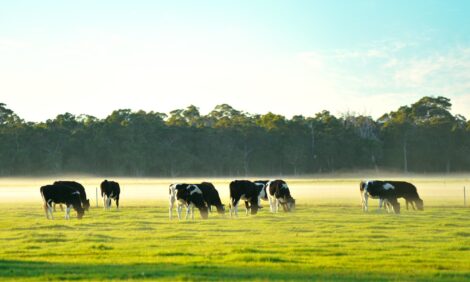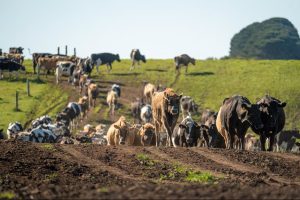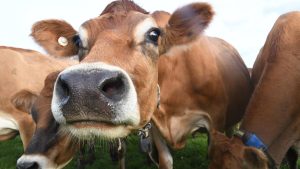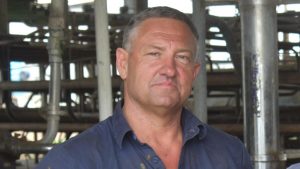
This, despite expected lower farm gate milk prices
Australia’s dairy farmers are “in reach” of a fifth consecutive year of overall profitability, despite lower minimum farm gate milk prices forecast for the season ahead, according to a new industry report.
In its recently-released Australian Dairy Seasonal Outlook 2024, titled Walking a Tightrope, agribusiness banking specialist Rabobank says “all signs indicate that, with diligent budgeting and planning, the average Australian dairy farm business will post a fifth consecutive season of profitability in 2024/25”. This is despite a drop in farmgate milk prices expected for farmers in the southern milk pool.
Rabobank expects minimum farmgate milk prices across the southern Australian manufacturing pool to range between AUD 8.00 and AUD 8.20/kgMS (milk solids) for the season ahead, down approximately 11 per cent from the current pricing.
Report author, RaboResearch senior dairy analyst Michael Harvey said with the deadline for the new season milk pricing looming (on June 3), Australian dairy companies find themselves “walking a tightrope”, needing to send strong price signals to milk suppliers while navigating a backdrop of softer market returns.
“In a market short of milk – and with an ambition to build momentum around the current milk supply recovery in Australia – dairy companies need to present sustainable milk price signals to suppliers in order to remain competitive,” Harvey said.
“However, Australia’s milk supply recovery is ahead of schedule – with some excess volumes being channelled toward bulk ingredients and commodities, which are underperforming in local and export markets – meaning parts of the product mix are loss-making,” he added.
“Meanwhile, the domestic market is delivering better returns for dairy following a period of hyperinflation across the grocery aisle, but consumers choosing to trade down as a result of cost-of-living pressures is negatively impacting the domestic retail channels,” Harvey said.
As such, Harvey said, parts of the industry need to brace for a reduction in farm gate milk price in 2024/25.
Price upside
From now, Rabobank says, any upside to minimum farmgate milk prices will likely need to come from further global dairy commodity market recovery. “And this is not Rabobank’s base expectation for the next 12 months given the sluggish global market fundamentals,” Harvey said.
“In fact, global market uncertainties warrant a more conservative approach to minimum pricing,” he added.
“The dairy commodity market (in US dollar terms) has rallied from the 2023 lows that took a toll on farmgate milk prices in export regions outside of Australia,” Harvey said. “But, while commodity returns are showing positive trends, the recovery in global commodity markets has cooled ahead of Australia’s new production season.”
Other profitability drivers
Harvey said the bank expects major input costs for feed production to “remain range-bound at lower prices” heading into the new dairy production season.
“Local feed markets appear well supplied, which is positive for dairy farmers planning feed budgets heading into the new season,” he said. “Most purchased feed market indicators are trading below the five-year average, and good subsoil moisture levels on the east coast of Australia bode well for a strong winter crop planting and a neutral feed price outlook.”
Other cost-inflation headwinds continue to linger, although are slowly receding, the report says.
“There is sticky cost inflation in other parts of the business, with Australia still fighting to bring inflation back under control. So there are ongoing cost pressures on-farm,”Harvey said.
“Broadly though, cost inflation across the Australian economy should continue to moderate in the coming season,” he added. “And this will be welcome news for Australian dairy farm businesses which have been battling high overhead cost inflation.”
Current seasonal conditions, and the three-month weather outlook, remain “quite mixed” for Australia’s dairy sector, the report says.
“On a positive note, according to the Bureau of Meteorology, El Niño has ended with the El Niño–Southern Oscillation (ENSO) returning to neutral. And some key dairying regions had received a mild autumn break,” Harvey said.
Milk production bounce
The report says Australia is enjoying widespread growth in milk production across all regions and states in the current 2023/24 season. However, it noted, this milk supply recovery is off a low base with the sector shedding over one billion litres of milk for manufacturing since the last major peak in milk supply in 2016/17.
Continuing farm profitability – coupled with ample feed and water availability – should provide a solid foundation for good milk production momentum into the new season, Harvey said.
Rabobank forecasts Australian milk production will finish the 2023/24 season 2.9% higher with momentum expected to continue in 2024/25 to deliver expected growth of 1.5%. This would mark the first two consecutive seasons of milk supply growth since 2014/15.
Shining light
The report said Australia’s dairy sector had been a consistently strong performer in recent years and “remains a shining light”.
“The average Australian dairy farm business has already banked consecutive seasons of above-benchmark profitability,” Harvey said. “It hasn’t been easy given the challenges associated with labour availability and cost inflation, but the sector has been profitable. And some regions have faced challenges along the way, given the weather disruption witnessed in recent years.”
Harvey said the 2023/24 season was drawing to a close with ongoing farm profitability delivering a record-breaking run and with the 2022/23 season as the high watermark for margin performance.
“The tide hasn’t turned, but right now, expectations for lower minimum milk price in 2024/25 across parts of manufacturing-exposed sectors will prevent margins from reaching the lofty heights of recent seasons,” he said.
“Nonetheless, the outlook for Australian dairy farmer margins for the 2024/25 season remains positive, but it will require diligent budgeting and planning that, hopefully, underpins some longer-term investment,” Harvey concluded.
You can now read the most important #news on #eDairyNews #Whatsapp channels!!!
🇺🇸 eDairy News INGLÊS: https://whatsapp.com/channel/0029VaKsjzGDTkJyIN6hcP1K

























